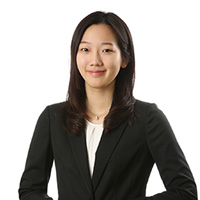[Newsmaker] [Hello Hangeul] 'Hangeul education is basic right for multicultural students'
Students from immigrant, foreign families take up 2.42% in Seoul schools, and numbers are going up
By Im Eun-byelPublished : Jan. 15, 2023 - 16:48

Publicly offered Korean language education for children from immigrant and foreign families is necessary because they are entitled to learn the language as part of their human rights, said Seoul City's education chief, stressing the need to expand quality high-level classes currently limited to adults.
“Students of multicultural backgrounds should be given a chance to learn the Korean language as a basic human right that they are entitled to,” said Cho Hee-yeon, superintendent of Seoul education office, in an interview with The Korea Herald late last year.
“Hopefully, we can expand Korean language centers at universities, opening them up to younger students for instance, offering a six-month program for students who are yet to begin school here,” he said.
Korean language centers under higher education institutions such as Yonsei University and Korea University offer education to foreign national adults with a high school degree.
“The centers’ curriculum, which are of high quality, are limited to adults. It would be better if elementary, middle and high school students could enroll in the programs,” Cho said.
In recent years, Korea has been seeing a rise in the number of students with multicultural backgrounds, referring to children who were born or being raised in Korea in families of international marriages, foreign families and more.
According to the Ministry of Education, there were 168,645 students from multicultural families in Korea as of August. In Seoul, there were 19,513 students from multicultural families as of April, taking up 2.42 percent of the total student population in the area.
As of now, the public education system offers Korean language education to students of multicultural backgrounds through separate classes at schools and after-school lectures at the Seoul Multicultural Education Support Center in southern Seoul. Students who have trouble adapting to local schools can also enroll in international schools.
However, it would be better if immigrant youths -- meaning children born outside of Korea in families of international marriages -- could attain a certain level of language proficiency before they officially enroll in the local school system, Cho said.
Apart from Korean language education, Cho believes diversity in students’ ethnic and cultural backgrounds can take Korean education to another level.
“We have been seeing more students from multicultural families lately, and this could be a turning point for the national education system,” Cho said. “It is important to have students nurture sensitivity for diversity. They have to learn to live in a diverse environment.”
To help students from multicultural families find their place in their local communities, Cho hopes to expand the range of extracurricular support programs offered to them.
For instance, the education office has been running the Dream Mentoring School program for students from multicultural families. Famed designer Lie Sang-bong and other renowned figures from the fashion industry will meet with students who have ambitions to become models or fashion designers, and help them put on a fashion show.
“I believe multicultural backgrounds will be assets of competence in the future. Education should encourage students from multicultural families excel with their strengths,” Cho said.


















